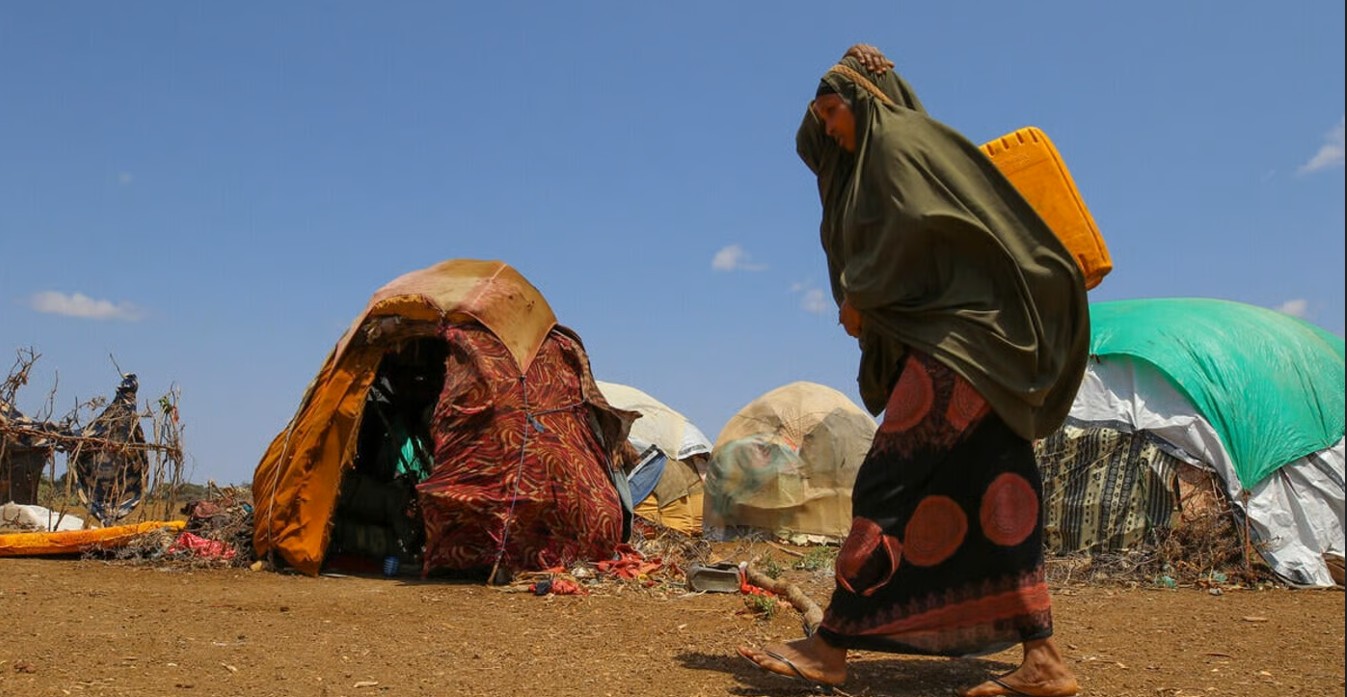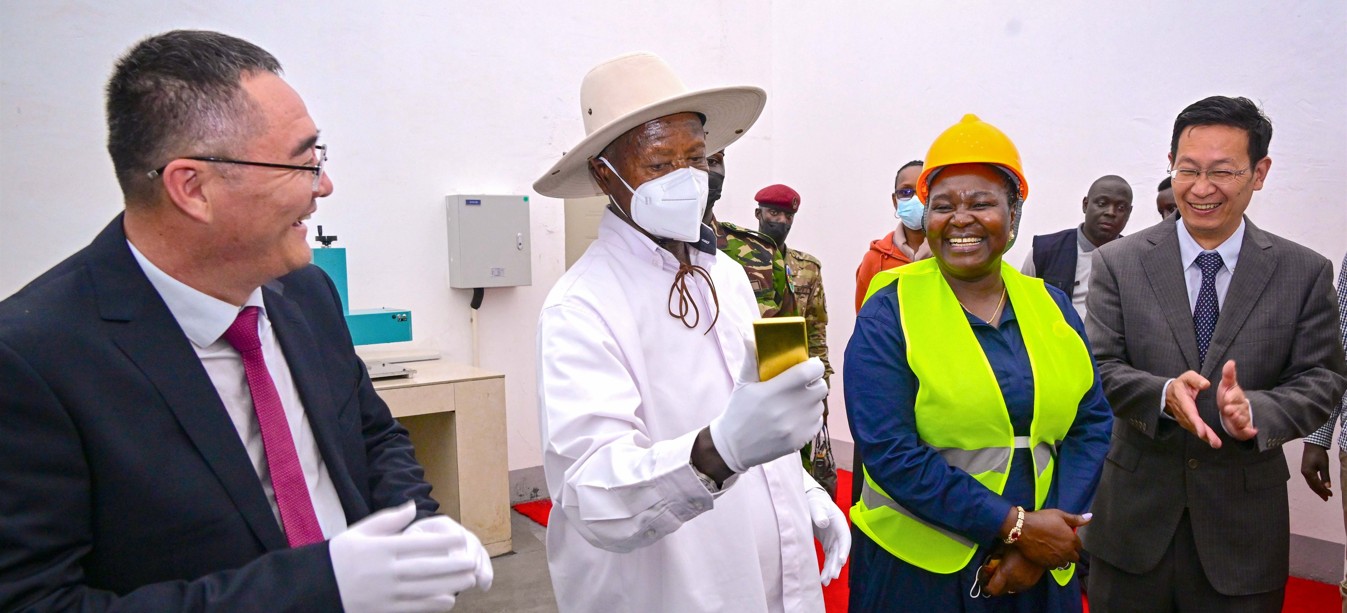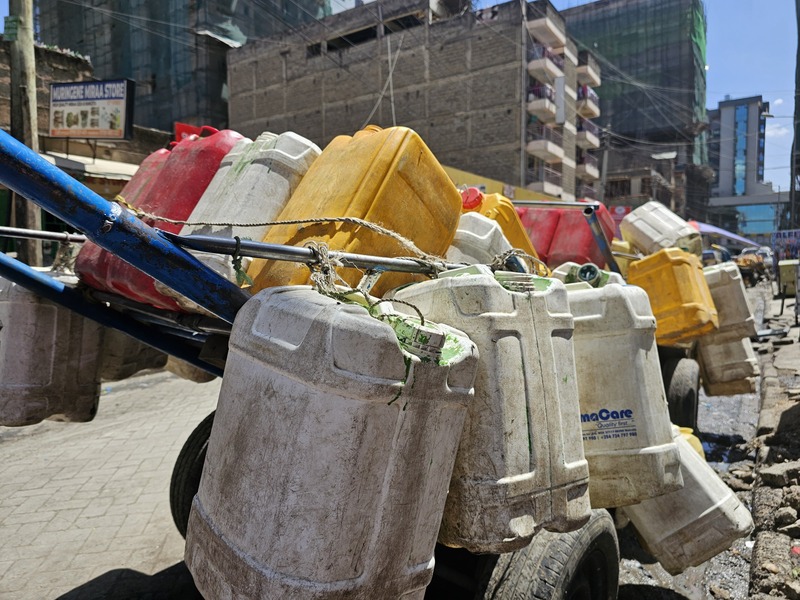Untapped potential: Camel milk can turn around pastoralists' fortunes
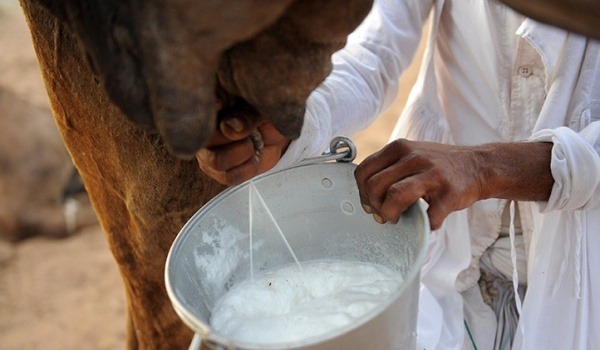
Building a plant with machinery to make spray-dried or freeze-dried milk powder would be a game-changer, as the need for “cold chain” transportation of camel milk would diminish greatly.
With proper and adequate investment, pastoral farmers in northern Kenya can turn camel milk into a top foreign exchange earner, according to Christina Adams.
She is a writer, researcher and a globally known expert in autism and camels.
More To Read
- Camel milk: The superfood you should be drinking
- FAO calls for increased camel products awareness to help dependent communities
- Desert gold: Camel milk makes its way to big malls’ shelves
- Camel meat makes Al-Yusra menu a welcome relief for Nairobi dining
- Garissa communities turn to camel milk value addition to secure livelihoods
- 10th Street: Eastleigh's ‘little Ethiopia’ where beverage lovers enjoy special coffee
Speaking to The Eastleigh Voice’s Barack Oduor, Adams, the author of Camel Crazy: A Quest for Miracles in the Mysterious World of Camel and A Real Boy: A True Story of Autism, Early Intervention and Recovery, says pastoralists can use camel milk to fight poverty in their communities.
Here are the excerpts from the interview:
Q: How can northern Kenya pastoralists turn their fortunes using camel milk?
A: Farmers in northern Kenya can raise their economic prospects by serving the growing demand for camel milk. By communicating with remote pastoralists, key supporters like the government and NGOs can help them build proper support and infrastructure, rather than just relying on roadside plans.
Enhancing milk production, improving processing and bottling techniques and coming up with new marketing ideas would help them. Building a plant with machinery to make spray-dried or freeze-dried milk powder would be a game-changer, as the need for “cold chain” transportation of camel milk would diminish greatly, giving the milk a longer shelf life and creating products for export.
Veterinary care also needs to be improved, as well as setting sanitation standards in handling and production while still allowing raw milk to be sold in a hygienic way, as much of the market prefers it.
With this support, consumers looking for non-allergenic dairy products, health-seekers and sustainable food supporters can be served. Camel milk is already demonstrating the potential to provide an economic boost for the region, and while deep expertise is required to grow this ability properly, it can be done successfully.
Camel milk may have the best medicinal and nutritional benefits, according to studies.
Q: Are there immediate markets for camel milk?
A: Acorn Special Tutorials school in Nairobi (which caters for students with special needs) takes delivery of 300 litres of camel milk per month from White Gold Camel Milk, according to the company’s founder Zamzam Sheikh.
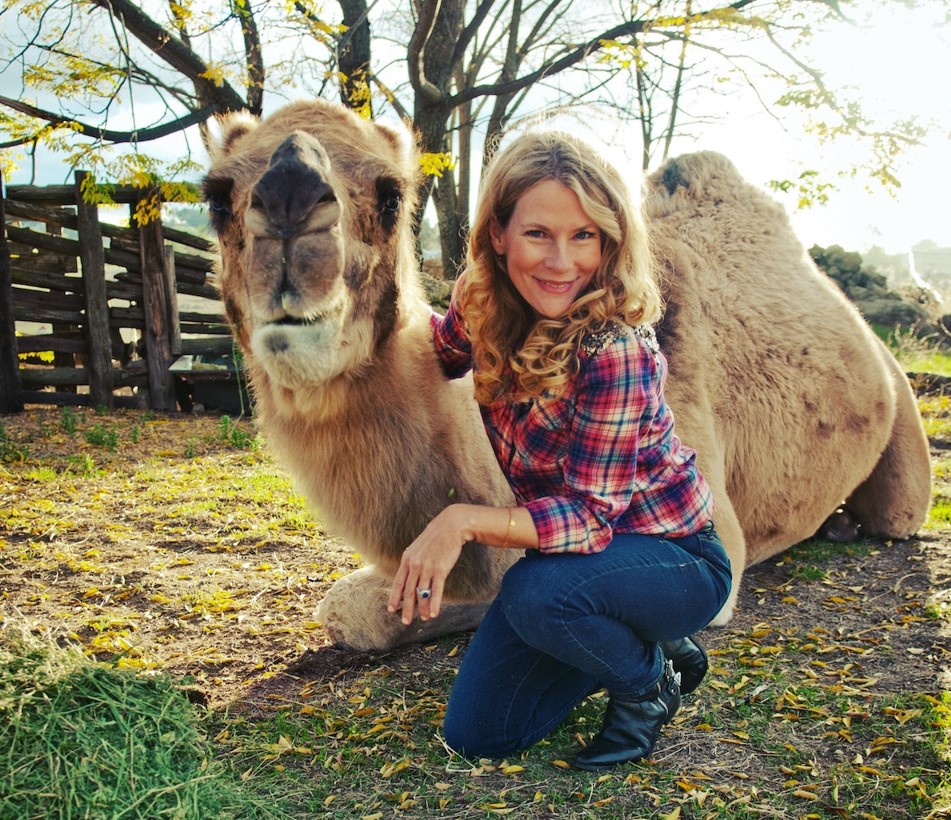 Christina Adams, the author of Camel Crazy: A Quest for Miracles in the Mysterious World of Camel. (Photo: Ravishly)
Christina Adams, the author of Camel Crazy: A Quest for Miracles in the Mysterious World of Camel. (Photo: Ravishly)
Autism is poorly understood and extremely underserved in Kenya, and milk is a simple and accessible tool to nourish often-picky children and possibly help
with their symptoms as well.
The Eastleigh market in Nairobi, where many Somali immigrants live, has witnessed the free flow of camel milk, with motorbikes coming at night to bring the milk anonymously even as other joint activities freeze up over disagreements.
It is yet another way that camel milk brings people together, as it happens during my public events when families, veterinarians, herders, scientists, educators and doctors come to learn about camel milk.
Q: Why is camel milk becoming popular even in Kenya’s urban centres?
A: Camels produce milk that sells at a good price, although pastoralists who are very remote often must spend much of their profit to get the milk to processors. But at least even sour or fermented milk goes for 75 per cent of the full value, as people like it.
For instance, women provide the milk for motorbike pickup, sending the milk over a few hours to the cities; others sell it in the markets. Women’s access to camel milk often benefits their children, including girls who might not otherwise get their school fees paid, and lets them manage other families and business needs more directly.
A typical Kenyan motorbike with a cooler can carry around 40 or more litres. As Kenyan roads have improved lately, the milk can be moved for 200 miles now in one day. Motorbikes are better than trucks because they can access narrow, rough camel roads where larger farm vehicles can’t pass.
Q: But how hard is this camel milk business?
A: While camels are often kept for pride, tradition and family uses like dowry payments and as compensation in cases of harm, it is, however, not easy work.
It is more of a lifestyle than a business, traditionally. Herders must move around, within a range of 20-40 kilometres, to find grazing opportunities and water for their camels, making them hard to contact at times.
While the milk stays fresh for up to 24 hours in a dark place, if it stays out too long in the heat, it can become sour.
Q: How did you get the idea that camel milk would help your son?
A: I was at a children’s book fair in California. At that time, I was a newly single mother of a 7-year-old son with autism. My previous five years had been spent researching and writing about autism and medical issues and publishing a book titled A Real Boy, about getting better from autism.
While my son was reading a book on the grass, I saw a camel nearby. Being a journalist by training, I wondered why a camel was there if no kids were riding it. I saw the owner nearby selling soaps and lotions made from camel milk.
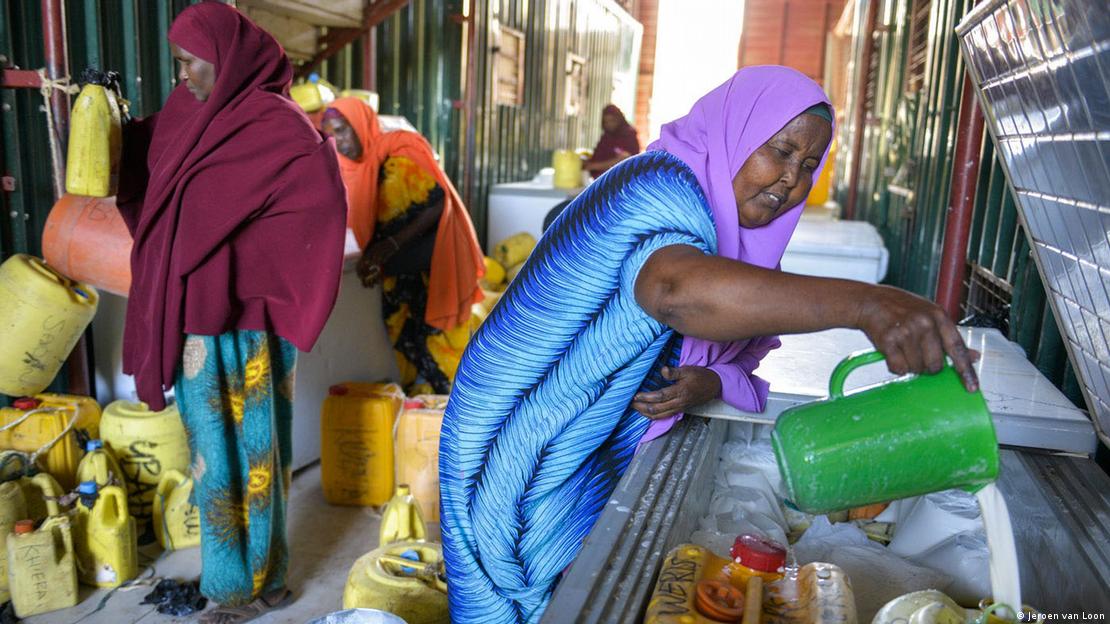 The Eastleigh market in Nairobi, where many Somali immigrants live, has witnessed the free flow of camel milk, with motorbikes coming at night to bring the milk anonymously even as other joint activities freeze up over disagreements. (Photo: Jeroen van Loon)
The Eastleigh market in Nairobi, where many Somali immigrants live, has witnessed the free flow of camel milk, with motorbikes coming at night to bring the milk anonymously even as other joint activities freeze up over disagreements. (Photo: Jeroen van Loon)
Out of curiosity, I asked him, “What else do they do with the milk?” He said it was given to premature infants in Middle Eastern hospitals, as it was thought to be non-allergenic and might be very close to human breast milk.
I immediately had the idea that it might help ‘reboot’ my son’s immune system and help with his autism symptoms, as they are often tied to immune dysfunction in children with autism spectrum disorders.
I also thought it would be a great dairy substitute for people like him who couldn't tolerate regular dairy products.
Cow cheese made him hand-flap and walk in circles, signs of autism — which he described as feeling like there was “dirt in his brain.” Cow and goat milk gave him autism symptoms and vegan
substitutes like rice, nuts or soy increased his allergic response, as seen in blood tests.
Q. How did you get it in the country and how hard was that?
A. There was nearly no information on camel milk online, and nothing about autism. A few months into my search, I found an article by two Middle Eastern doctors reporting that children with autism and food allergies improved on using camel milk.
This confirmed my idea and showed I was on the right path. I kept asking around about camel milk and a Pakistani friend brought me some from the Middle East. But it was confiscated and dumped by US customs.
I called another person and I finally flew in some frozen bottles of Bedouin camel milk from the Middle Eastern desert to Los Angeles.
I ordered more and began stockpiling the milk to conduct a trial for my son. It was very expensive and risky but the milk made it safely every time, frozen hard as a rock.
Q. How did your son react?
A. After a serving of milk at bedtime, he was so different the next morning. He had more expressive language, with more emotional words, saying things like, “I really love you guys, you do so much for me.” He displayed improved motor skills (cutting his food, putting on his shoes, walking down steps without dragging, picking up his own backpack).
He also was much calmer. Within days, he could cross the street without me holding onto him. His behavioural breakdowns stopped immediately. Within weeks his skin grew smoother.
The milk also stopped the negative effects of drinking cow milk, eating cheese and sugar, reversing the skin irritation, agitation, mental distraction, hyperactivity and stomach pain they caused, halting many of them in minutes. Overall, he had a 30 per cent symptom improvement.
Q. How did this movement grow from just one child to the world now?
A. I only told a few people at first, worried that they would overwhelm customs by doing the same thing. I also got federal permission from the USDA to bring it in. After I learned that camel milk was being produced in America by Amish farmers, I tried their milk for my son and it worked. So I published a magazine article titled “Got Camel Milk?”
It went viral and set off a global movement among parents, camel owners and business entrepreneurs. I then published a peer-reviewed medical journal article titled “Autism Spectrum Disorder Treated with Camel Milk”. It gained international scientific attention.
It has now been cited around 31 times by researchers and has led to further camel milk research. Camel milk is now noted as safe and effective for children with autism in science literature. My new science publication is “Camel Milk and Other Dietary Treatments for Autism”.
Q. What are the most amazing facts about camels?
A. Too many to name. But they’re extremely durable animals and that’s why they enabled trade routes that led to many of our current customs and civilizations. Highly evolved features let them adapt and thrive in the harsh conditions of their hot (and cold) homelands.
They can go for up to a month without water, and recycle their bodies’ water from their nostrils to the mouth in a self-contained cooling and recycling system. They have several layers of eyelids and a double row of eyelashes to keep out sand.
Unique oval blood cells let them dehydrate and keep their blood flowing in extreme conditions, and safely swell up again as they fill with water.
They possess a very small type of antibody called a nanobody, which is only found in sharks and camelids (a group including llamas, alpacas, camels, vicunas and guanacos). These nanobodies can deeply penetrate the crevices of germs and tissues and may help treat human diseases.
Q. What kind of scientific uses are being explored for camels and their milk and other products? What diseases are they being used for?
A. Nomads call camel milk “nature’s pharmacy.” It has long been used as a healing substance by nomadic, Middle Eastern, African and Asian countries, and was until recently freely given to sick people as a special duty.
Diabetes, arthritis, wound healing, stomach ulcers, gastrointestinal issues, prematurity in infants and many other types of illnesses are ameliorated with camel milk.
A Somali legend holds that someone who drank camel milk every day could not be anaesthetised as they were so strong and vital from the milk.
I actually met a Somali woman who claimed this happened to her.
Now, new studies show hope for people with autism, diabetes, liver function, food allergies, mild to severe digestive disorders, skin conditions, tuberculosis and more.
Camelid antibodies are used to develop treatments for sexually transmitted diseases, seasonal allergies, snakebites and immunotherapy among others.
Camel urine is being used for health purposes in Europe and in the Middle East, mixed in a camel-milk cocktail that resembles the flavour of kombucha (a fermented, lightly effervescent, sweetened black tea drink).
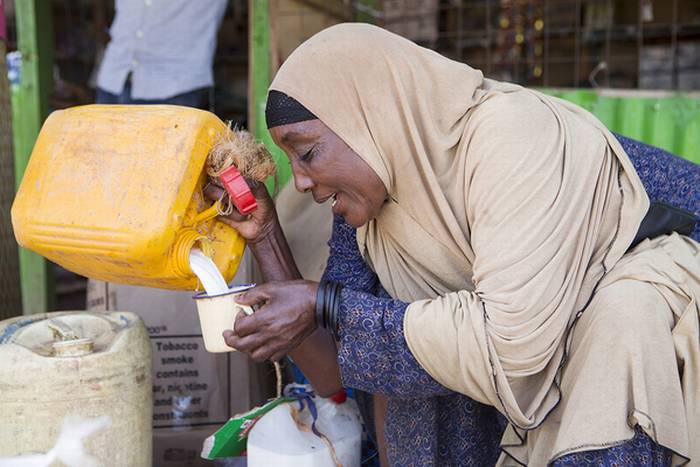 Halima Sheikh sells camel milk by the roadside in Wajir, northern Kenya. (Photo: Thomson Reuters Foundation/Nicky Milne)
Halima Sheikh sells camel milk by the roadside in Wajir, northern Kenya. (Photo: Thomson Reuters Foundation/Nicky Milne)
Additionally, camel meat is used for curative purposes by the Somali and other traditional peoples and it is very nutritious.
Camels are sold in meat markets in many countries, and you can now get camel tacos and burgers in America (made from Australian camels).
Q. Are there camels in America? Do people still use camels in the world?
A. There are thousands of camels in America, although they are in pretty remote areas far from cities. There are many camels in the world. Many people
keep camels for pleasure along with horses, donkeys and other livestock. Some are used for educational purposes or in zoos, others for rides and events like Nativity scenes at Christmas, Indian weddings or Texas camel treks.
The largest dairy herd is almost 200 camels in Missouri, with others in California, Pennsylvania and Colorado. Elsewhere, entire cultures make their living from camels — in Kenya, India, UAE, Chad, Niger, Morocco, Somalia, Pakistan, and Mongolia among others.
The camel milk market is projected to have 7-10 per cent growth and it is now a very fast-growing livestock venture.
Q. How can camels help in eradicating global warming and fighting against climate change?
A. Camels take far less feed and water to produce milk than cows. Their milk is highly nutritious in addition to having healing qualities. Traditional people report living off the milk for weeks, with no other food.
Camels can survive on scrubby low-water plants in hotter climates. They don't have messy excretions like cows. Mothers and babies are kept together, and the babies aren't artificially fed and fattened like some factory-farmed animals.
While camels produce less milk than cows, families and groups can easily manage a herd for their own and others’ needs.
Traditional techniques of drinking and fermenting camel milk increase its “shelf life,” reducing the need for factory dairy farms, expensive trucked-in food and refrigeration sources.
Q. And the most common question of all: What does it taste like?
A. Everyone asks that. Then they sip it and say, “It tastes just like milk.” That’s because it is milk. You can pour it on cereal or drink it with cookies, just like cow milk. There’s a very slight taste difference but most people don't notice or find it pleasant. It’s the only milk in my house now.
Top Stories Today
